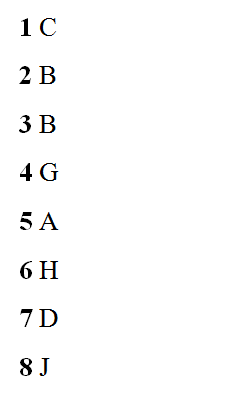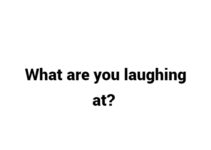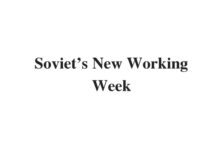Table of Contents
Passage
Birds are forced to migrate for a number of reasons, including seasonal climate cycles, a scarcity of food or of appropriate nesting sites. Established routes are followed, many involving punishing distances over land and sea. The longest migration of any known animal is that of the Arctic tern,which travels more than 15,000 miles from north to south and back again.
A What are some of the main ‘cues’ that research has indicated birds use in order to navigate successfully during migration? As the question suggests, there is no single answer: Keeton concluded that bird navigation is characterised by ‘considerable redundancy of information,whereby birds appear to draw on more than one method. This would seem to be essential, given changeable weather conditions, the need to overfly a variable landscape and/or seascape, and the fact that some birds manage to navigate at night.
B Rabol suggested that a bird is born with its migratory track imprinted as part of its DNA, but his ideas have been rejected by a number of experts, including Wiltschko and Wiltschko, who suggest instead that navigation techniques are an integral part of parenting. Of course, this does not account for the cuckoo, which does not remain with its parents (cuckoos lay their eggs in the nest of another bird).
C There is no doubt that major topographical features, such as hills and rivers, can provide birds with important landmarks. The fact that some birds, such as the swallow, return to the same nest year after year after a journey of thousands of miles suggests the ability to recognise key sites. Moreover, birds may use sight to orientate themselves in relation to the sun, perhaps using its relative height in the sky to determine latitude. However, an experiment by Schlicte and Schmidt—Koenig, whereby pigeons were fitted with frosted lenses, may indicate that sight is less important in birds than in humans, for these birds could still use the sun for orientation.
D It is thought that, unlike human eyes, birds’ eyes can detect ultra-violet light in adverse weather conditions. Matthews suggested that birds use the sun’s arc to establish longitude. The sun appears to be used by a number of birds as a compass and they seem able to adjust their biological clock to compensate for shifting through time zones from east to west.
E At night, the stars and moon provide an alternative source of observable data for birds. There is evidence that some birds memorise constellations (for example, Emlen’s work with indigo buntings in 1967 and Wallraffs 1969 experiment with caged ducks). If these constellations provide a reliable and little-changing map in a clear night sky, the moon on the other hand is too random to be helpful, changing its position in the sky night after night.
F Just as birds’ vision is more sensitive than our own, there is evidence to suggest that many birds can detect sounds outside our own range of hearing. Yodlowski etal. discovered that homing pigeons were sensitive to sounds below 10 Hz, known as ’infra-sound’, and could employ this for orientation purposes and in the crucial early detection of severe thunderstorms, with a consequent adjustment of flight path.
G Most birds don’t have a good sense of smell, but fish- eaters such as petrels and shearwaters are significant exceptions. These birds probably act on olfactory cues given that they only reach their nesting sites during the hours of darkness. However, this area of research is inconclusive : two experiments conducted by Papi, where the olfactory nerve of pigeons was cut, leading to a loss of navigation skills, gave inconsistent results : Baker and Mather regarded them as flawed, and suggested that the confusion may have been induced by the trauma of the experiments, or through loss of magnetic awareness.

H Geomagnetism was suggested as a possible cue for bird navigation as early as 1859 and much research has been done in this area. The Earth’s magnetic field is not of uniform intensity, being at its weakest at the equator; homing pigeons are thought to exploit magnetic anomalies for orientation (Gould 1980). In earlier research, Walcott and Green (1974) fitted pigeons with electric caps to produce a magnetic field. Under overcast skies, reversing the magnetic field by reversing the electric current caused the birds to fly in the opposite direction to their original course. This and other work suggests that magnetism does indeed play an important part in navigation for many birds.
Questions
Questions 1 – 2 Choose the correct letter, A, B, C or D.
1 According to Wiltschko and Wiltschko,
A cuckoo behaviour supports a genetic explanation for navigation.
B Rabol’s ideas on imprinting are worthy of further investigation.
C adult birds train their young to react to navigational cues.
D more studies are needed on the role of parenting in navigation.
2 What does the text suggest about the role of sight in bird navigation?
A Birds are unlikely to take notice of many physical landmarks.
B It provides essential information for revisiting breeding locations.
C Birds find it impossible to look directly at the sun when it is high.
D It is without doubt the most important sense that a bird has.
Questions 3-8 Look at the following statements about research and the list of people below. Match each statement to the correct person or people. Write the correct letter, A-J.
List of people
A Baker and Mather
B Emlen
C Gould
D Keeton
E Matthews
F Papi
G Rabol
H Schlicte and Schmidt-Koening
I Walcott and Green
J Yodlowski et al
3 proved that some birds navigate by the stars
4 raised the possibility of genetic programming
5 dismissed someone’s ideas about disorientation
6 demonstrated that birds do not need perfect vision
7 argued that birds rely on a combination of cues
8 suggested that birds may use their sense of hearing to forecast bad weather
Answers



